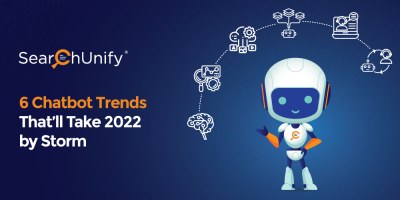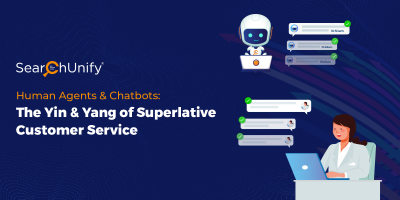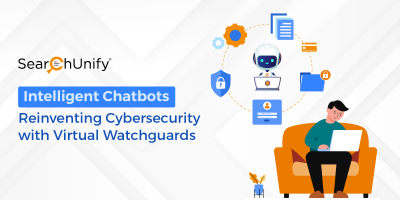
Last year significantly changed customer service interactions. Customers are now more interested in experimenting and using self-service tools & technology. One such tech is conversational AI or chatbot that is rising like a phoenix from the ashes.
With each passing day, chatbots are expanding their frontiers and covering a broad spectrum of use cases, from presenting relevant content on websites, setting up product demos, to automating customer service workflows. By doing so, they play a crucial role in acting as the bridge between various elements of customer experience.
For instance, if prospects or customers are interacting with a chatbot for some information and end up requesting to connect with human agents, they expect the agent to pick the conversation right where the chatbot left. It’s possible only if the chatbot’s framework is equipped to pass on the information nuggets to the agents.
Metamorphosed from a Greeting Tool to a Cognitive Assistant
Yep, that’s true. Conversational AI evolved from being just a touchpoint tool to a personal assistant that leverages cognitive resources (like ML, NLP, and analytics) to play many roles across your CX strategy.
If we circle back to the previous example, the same chatbot that provides information to a prospect can also ensure a smooth onboarding experience at later stages. It can use customer history and patterns to add context to interactions, thus making them more meaningful.
This ensures that the customers have a unified experience throughout different stages of their lifecycle. Not just that, chatbots help with the initial setup of a product, feature training, etc. But all that is only possible if you do things right.
Hence, if you’re planning to invest in a chatbot, it needs to be the right fit for your organization. It should be agile and adaptive enough to fit your business needs and CX strategy. Rather than going for a traditional standalone bot, you should go with a best-of-breed provider.
Now that we’ve covered what chatbots can do for your CX, let’s talk about successfully proliferating them into your CX strategy.
Laying the Groundwork for Exceptional CX with Chatbots
1. Data Integration
Unfortunately, data remains a massive roadblock for delivering seamless CX with chatbots. Organizations, especially larger ones, have disparate data sources. According to Roeland Jimenez, founder and CTO of Wave5, a data analytics firm, “All departments within an organization should be data suppliers to the rest of the organization. This needs an accessible data platform with strong data governance and transparency.”
Therefore, before even considering investing in a chatbot, your company should have unified search in place. It fuels the unification of disparate data silos to build a centralized content repository and an insights engine that articulates analytics. This is what most companies don’t know, and as a result, their chatbot project ends up failing to deliver the anticipated results.
Having said the above, getting internal buy-in for two projects—unified search and chatbot—can be a bit tough. What you can do is go for a solution that embeds both. Unified cognitive platforms like SearchUnify provide both, data integration and an intelligent chatbot that is powered by the core cognitive framework to improve service outcomes. It can index enterprise-wide content to generate relevant responses. That’s one of the many reasons why it was lauded in TSIA’s recent report on chatbots.
2. Conversation Design Readiness
The next thing to think about is designing chatbot conversations. You need to keep in mind the expertise required and available skills to make your chatbot deployment project a resounding success.
Some experts argue that you need to have a team of data scientists, linguists, and people with a creative writing background to design interesting conversations for all scenarios. After all, chatbot conversations are pretty similar to imagining diverse ways in which a customer could ask the same question.
But there are a few downsides to this approach. Firstly, the cost and efforts associated with finding the right talent. Next, if you rely on bot trainers to take the reins, your chatbot will ultimately be only as good as the trainer. Not to mention, the entire bot knowledge goes out the window once the trainer leaves.
The solution is to invest in a chatbot with dynamic decision tree-based structures. Unlike traditional standalone bots, these new-age bots shift the onus of quality chatbot interactions from trainers to AI. They are easy to train and have a base storyline for quicker ROI. They leverage ML, NLP, adaptive unsupervised learning, and a resilient hierarchical structure to ensure that the conversation loop doesn’t hit a wall. If you want to dive deeper into this topic, here’s a crisp blog post that will help.
3. Chatbot Analytics
Once you’ve deployed the chatbot and designed the conversations, the next thing to focus on is chatbot analytics. It is a treasure trove of valuable information that can improve customer experience. By analyzing interactions, you can measure the effectiveness of your chatbot.
Advanced chatbot solutions come with built-in insights that detail metrics such as the total number of users who interacted with the chatbot over a given period, which intent was used the most, and other reports that enable you to check whether the responses given by the chatbot are relevant.
You can also use a homegrown metric that categorizes all chatbot interactions as good, neutral, or bad chats. This segmentation draws your focus towards the variables that create a negative chatbot experience like long wait times, user and bot repetition cycles, and the use of curse words across dialogues. Ultimately, these metrics help you to identify specific design or conversation flow errors and correct them to elevate interactions.
Final Thoughts
Chatbots are all set to unlock new possibilities and ways your customers interact with your business. To truly stand out from the pack and deliver exceptional CX, leaders need to choose next-gen, cognitive chatbots.
SearchUnify’s Intelligent Chatbot is lauded by research and advisory firms like TSIA and Forrester as “a best-of-breed” and “Outstanding use of technology to develop the next-gen tools for better service of customers,” respectively. Download this datasheet to understand how SeachUnify’s Intelligent Chatbot is truly one of a kind. And if you like it, click here to request a free demo!
















